Delicious Rose Powder
August 2021
I love rose powder. I love everything about it – I love growing the roses, I love making the powder and I love using the powder in my botanical skincare products. For me, rose powder captures the essence of the rose – from the amazing aroma to the range of colours produced. I have been making rose powder for a few years now and I thought I would share some of the things I have discovered.
The type and colour of the roses you use is very important. Obviously if you want fragrant rose powder then you need to use fragrant roses and also obviously, you want to be using spray free roses. However, not so obvious is how the rose colour and size of the petal affect the quality of the rose powder.
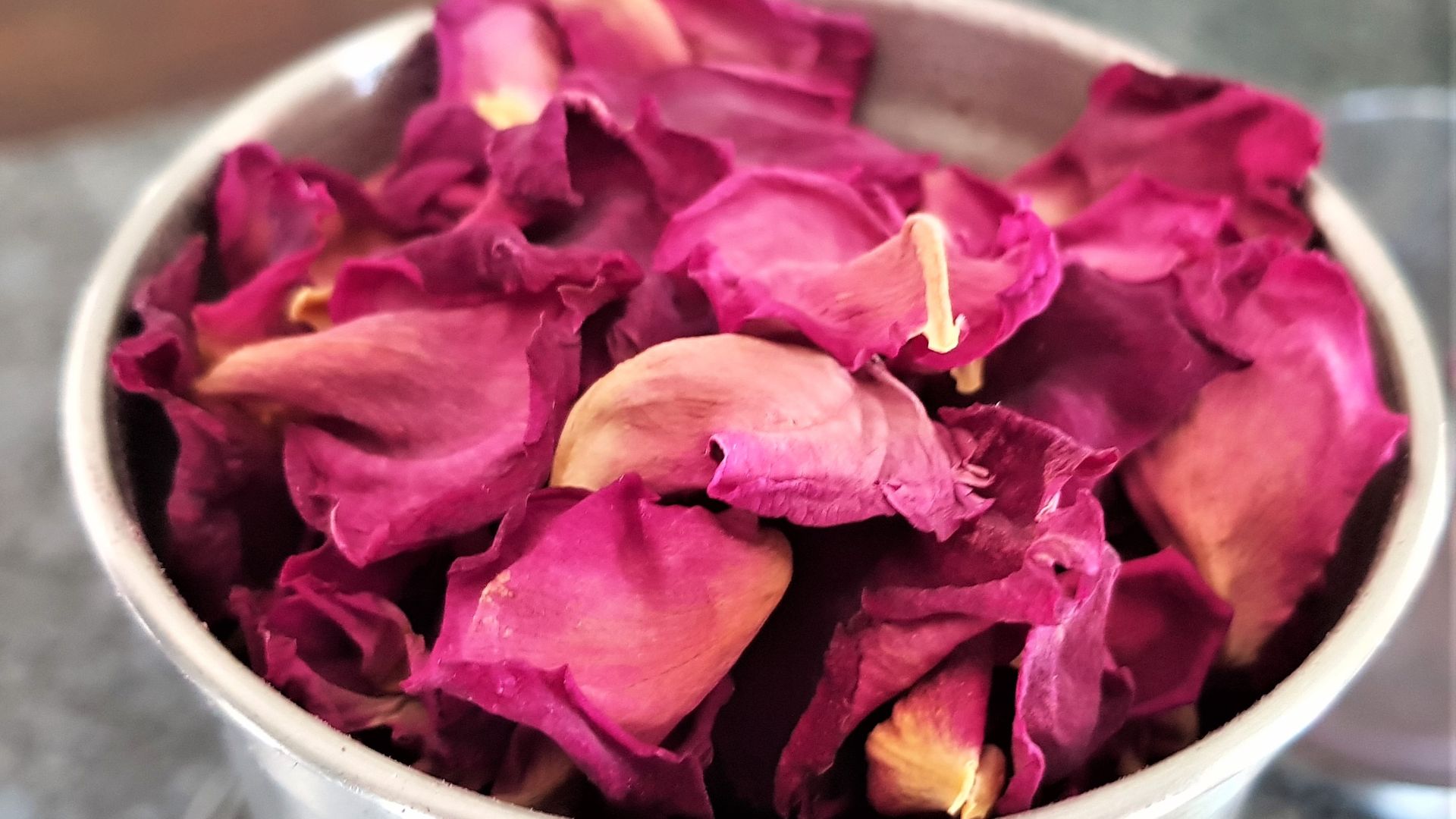
In my experience, red roses with small petals are the very best roses to dry – my favourite would have to be Munstead Wood (a David Austin rose). Roses with small petals seem to dry better than those roses with big petals. The big petals just never seem to get crispy – they always seem a bit leathery as though they are not completely dry. For a few years I grew Memorial Day rose – a divine smelling rose with huge petals, but the petals just didn’t dry crispy and so didn’t powder very well.
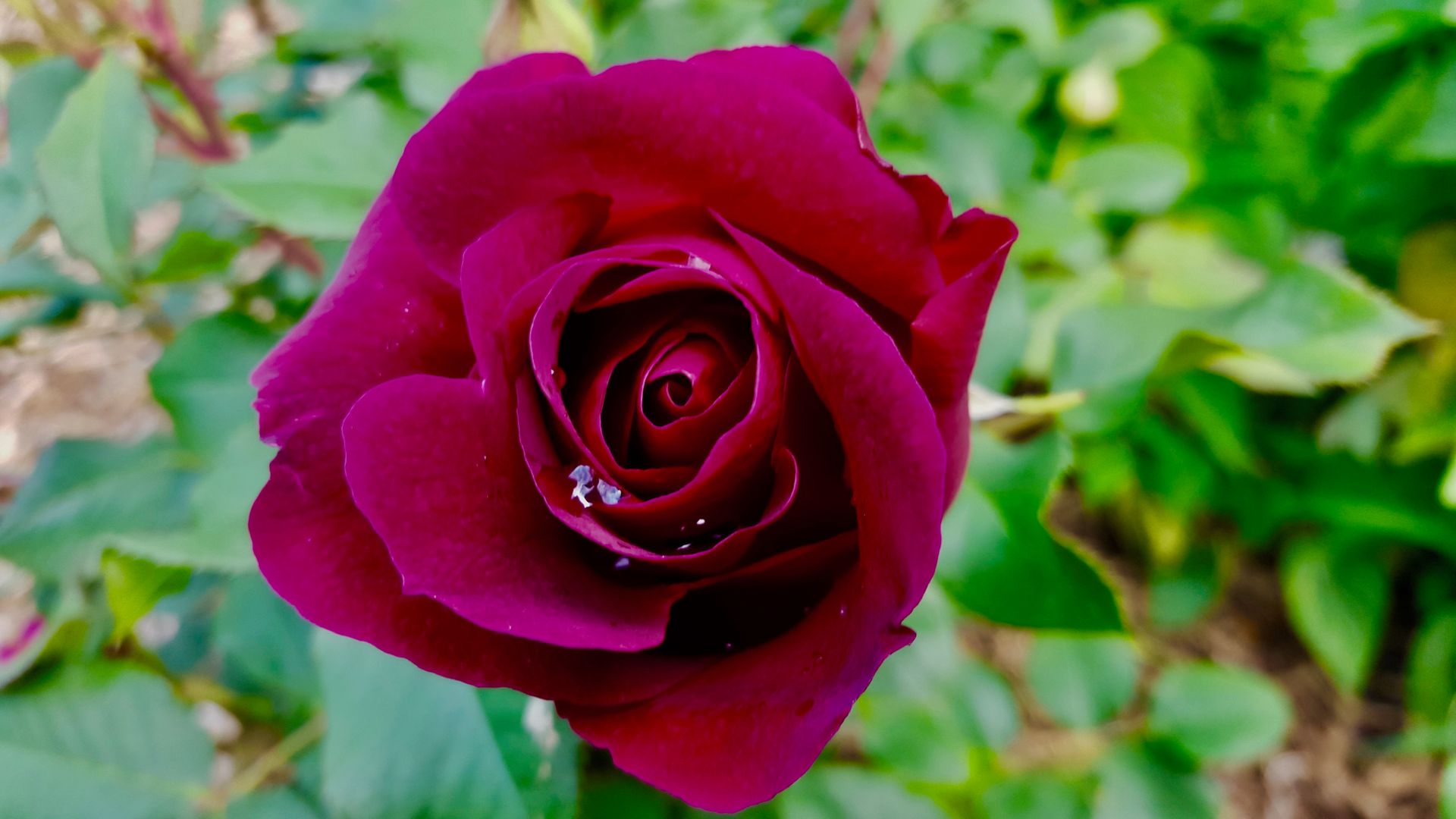
Munstead Wood Rose
I have a new bright red, climbing rose this year called Red Flame which is proving to be a very good rose for drying. It is a very robust rose – vigorous grower, disease resistant and flowers constantly and late into the season.
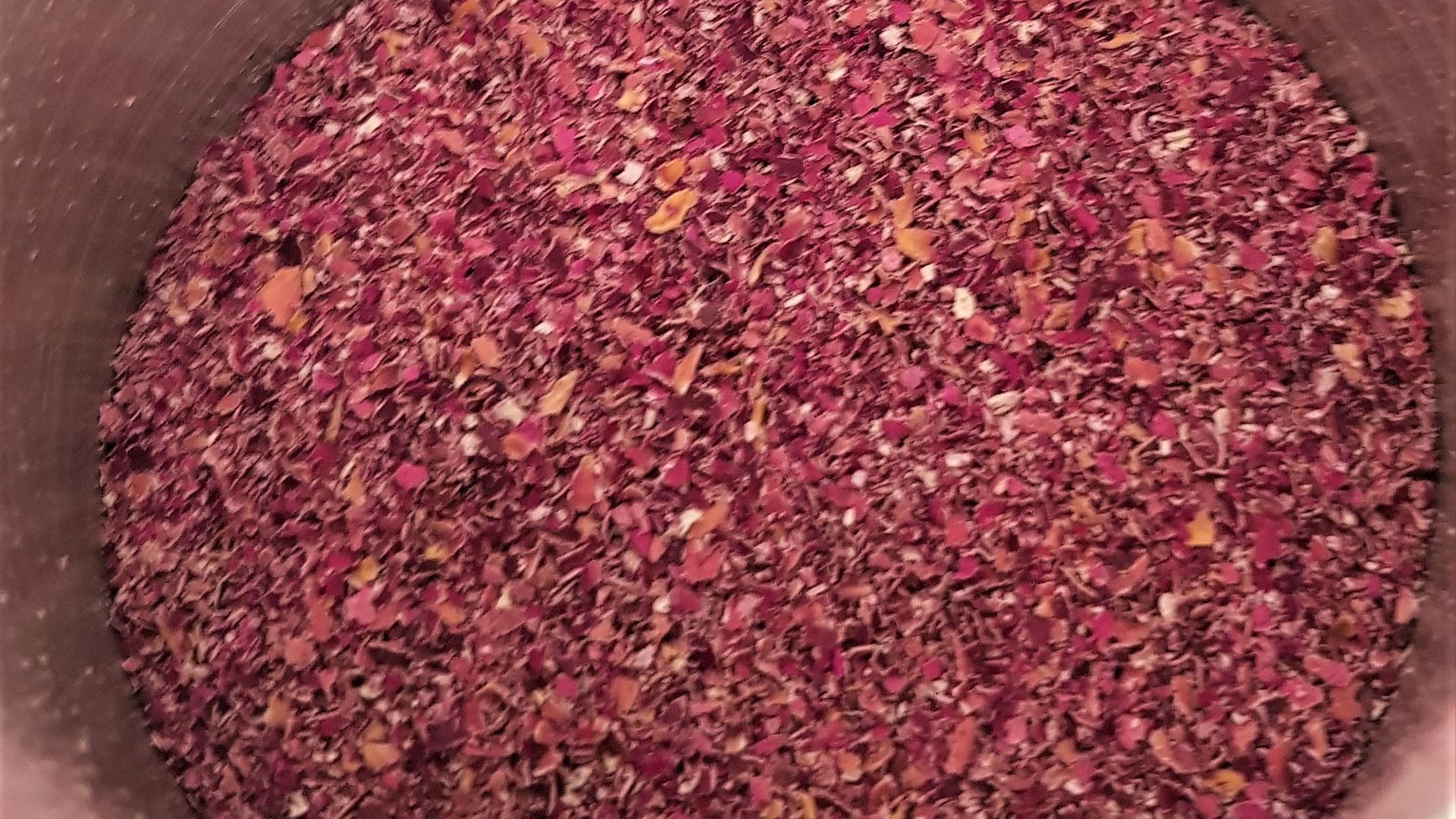
Red Flame Rose Powder
Red roses also keep their colour well. The pink, white, yellow roses dry nicely and look beautiful but after a while they start to fade and to be honest, some of the petals go quite brown and discoloured. They still smell amazing but just don’t look very pretty so I mix them with some red rose powder to make the powder more attractive.
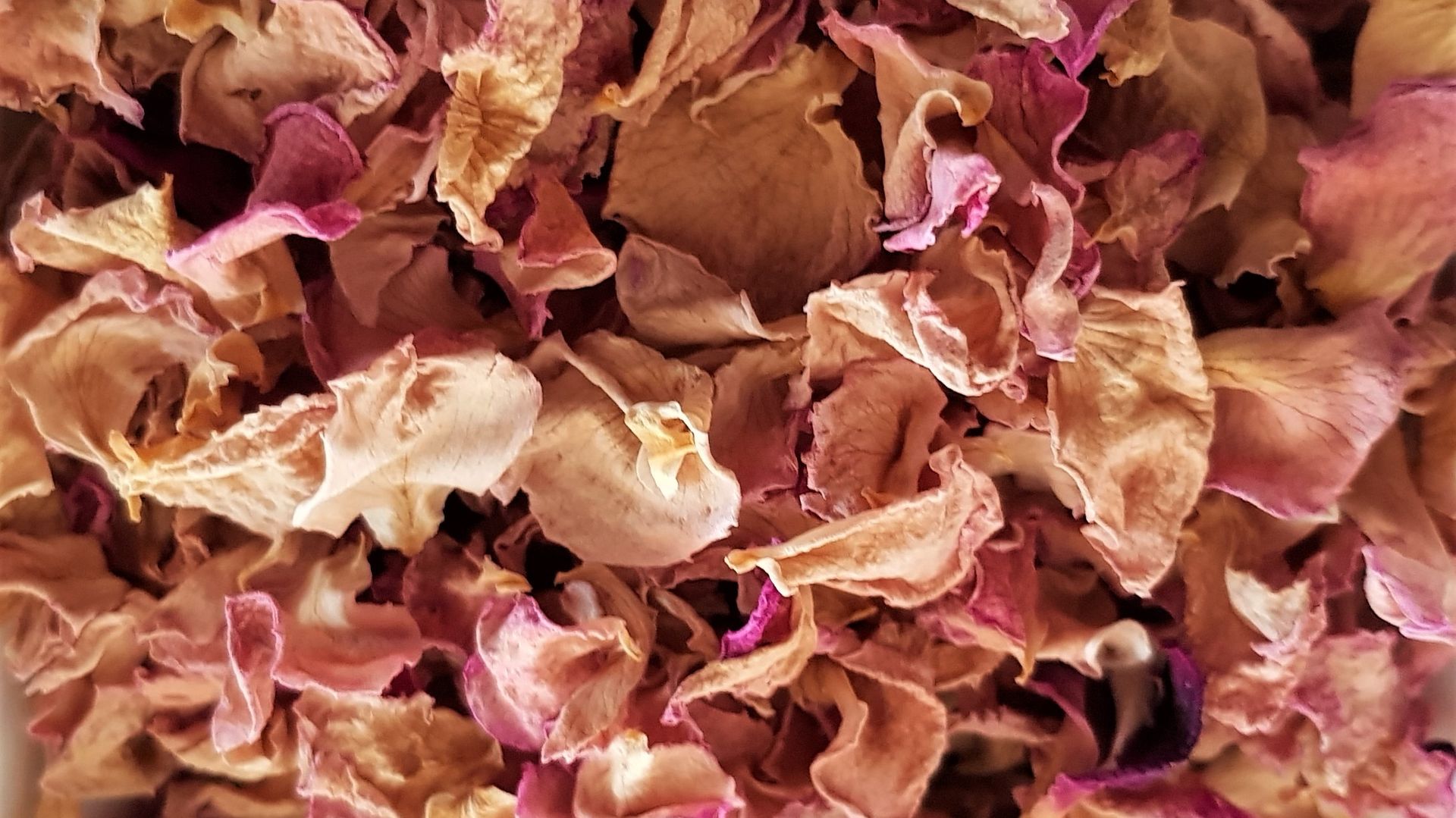
(Faded) Pink Roses Dried in December 2020
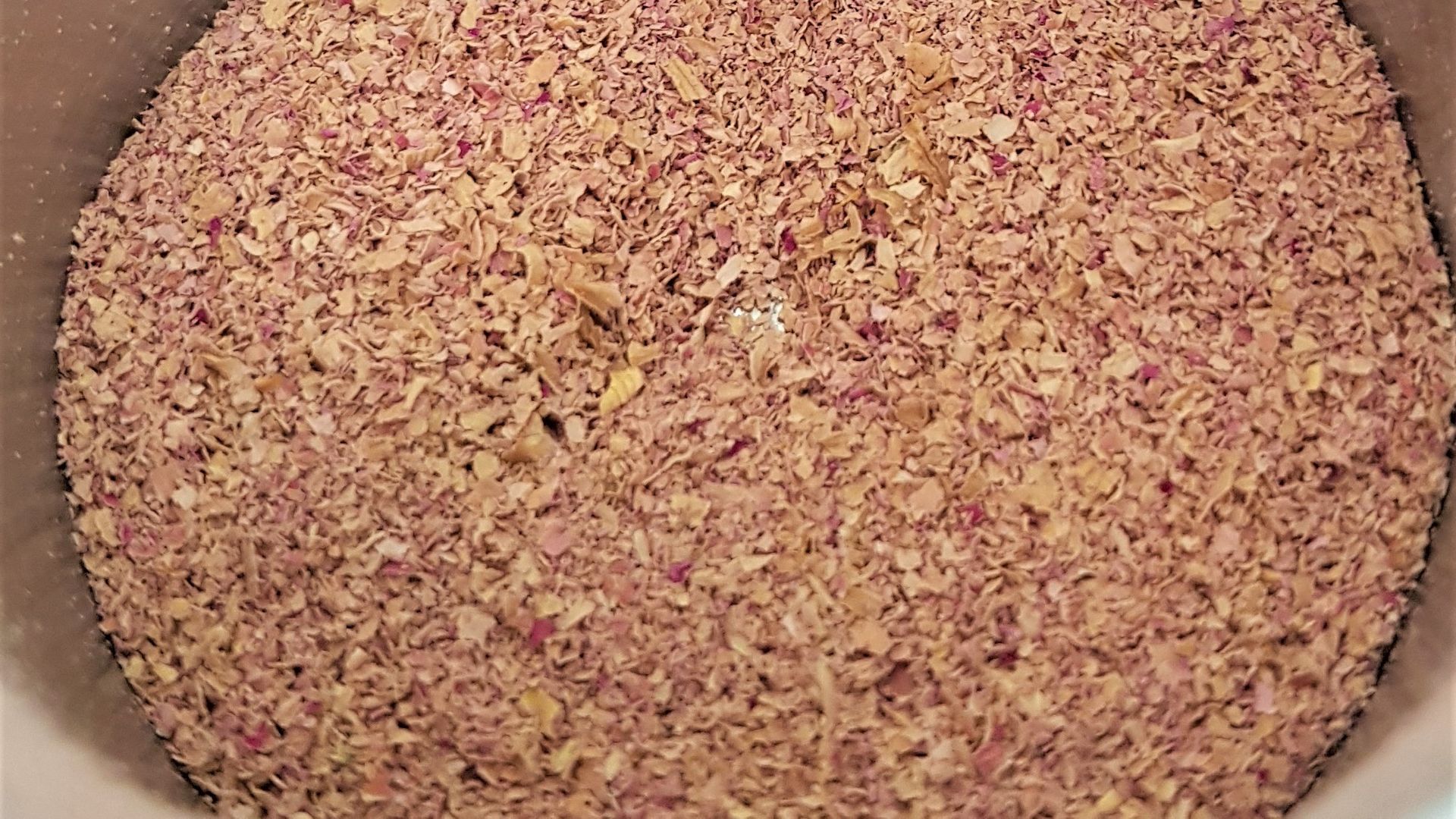
(Faded) Pink Rose Powder
Well dried rose petals that are crisp to the touch are easy to make into powder. I use a little spice grinder which does the job very efficiently. It is one of my favourite things to do – the smell is amazing, and you get a very beautiful powder.
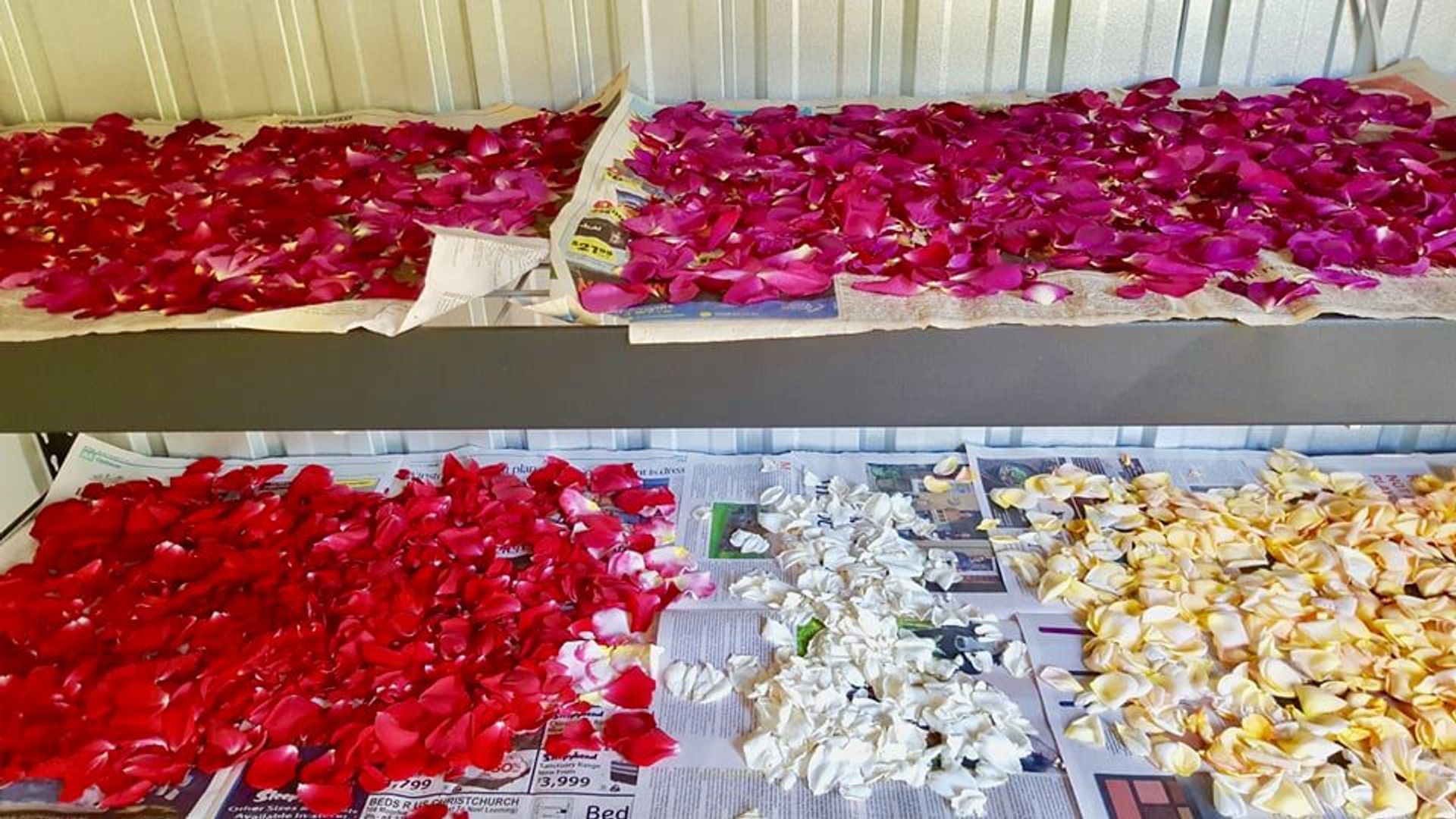
Roses drying in the drying shed
How to Dry Rose Petals
Rose petals are easy to dry. You need to pick the roses when they are open but not completely blowsy. Pick them on a nice, sunny day – once the dew has dried – ideally in the late morning. In practise I usually end up picking them at any time during the day and this works just fine. I am always conflicted when picking roses for drying as I do love seeing them growing in the garden – I have the same problem with bulbs and flowers – which is why I have created a dedicated flower picking garden this season (which is whole other story).
Once the roses are picked, you need to pull off all the petals which is such a fun thing to do – seems a bit “naughty” – I guess after all the years as a child being told not to pull off the flower petals. Then lay them out flat to dry. I generally dry them in my drying shed, but I have also dried some in my de-hydrator and on a sheet of paper on the floor of a bedroom. Ideally, it is good to dry them in the dark and at optimal drying temperatures (between 25 – 35 degrees) to preserve the volatiles (smell). They tend to dry quickly in my drying room – only taking a couple of days in the heat of summer. I like to dry them until they are crisp to the touch.
If you want different coloured rose powders then it pays to take the extra time to separate out the different coloured roses for drying. Margaret Merrill is my favourite white rose for drying while Gertrude Jekyll is my favourite pink rose.
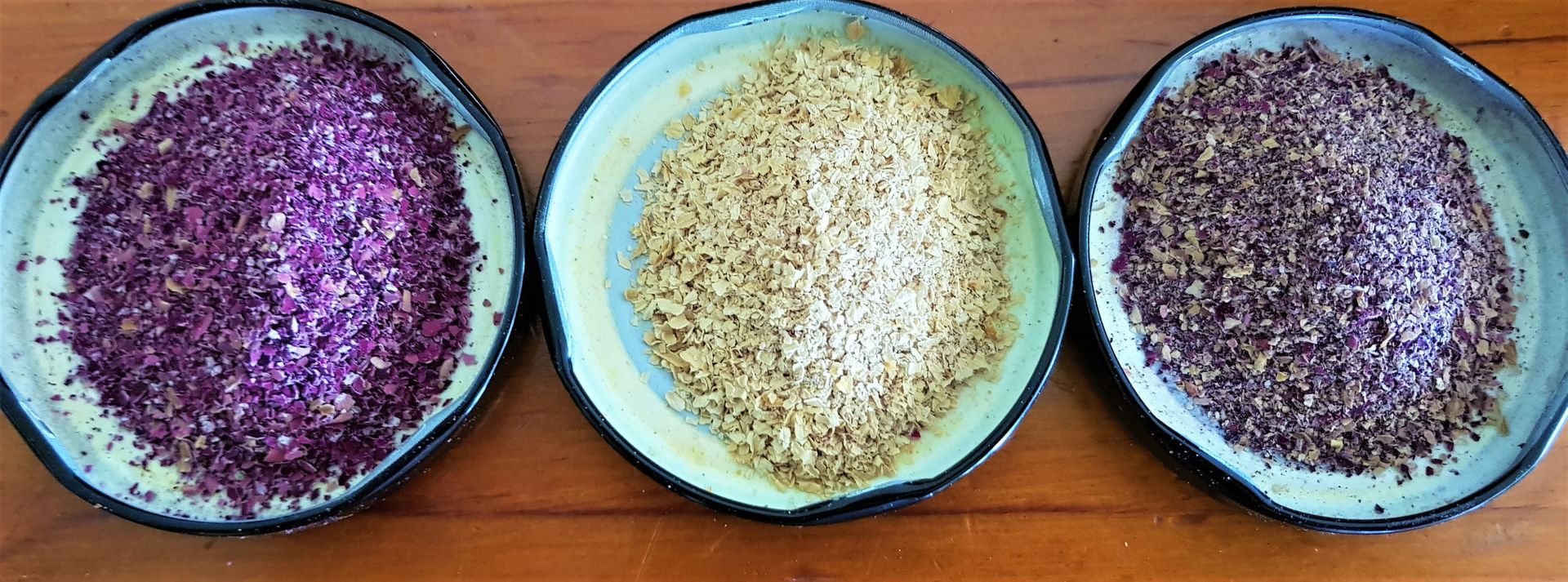
What to do with Rose Powder
I mainly use my rose powder in my botanical skincare products – I have a range of botanical powders that are used in my Botanical Skincare workshop. You could also use rose powder in cooking - it would be nice sprinkled over fresh fruit or icecream.
The reason I like using botanical powders in my skincare, is because you can reduce or eliminate the need to use essential oils to fragrance your product. Don’t get me wrong, I do love essential oils but I also like to minimise the use of them especially when they are going into skincare products. I have mixed feelings about essential oils – I think they are being a bit overused at the moment – essential oils take an enormous amount of plant material to produce and many people have sensitivities to them.
I don’t like using essential oils in skin masks and so using botanical powders works so well here.
Simple Face Mask Recipe
1 tbsp clay – bentonite for oily skin, kaolin for older, sensitive skin
1-2 tsp rose powder
Mix with enough water to make a paste and spread over face. You could use a rose hydrosol instead of water.
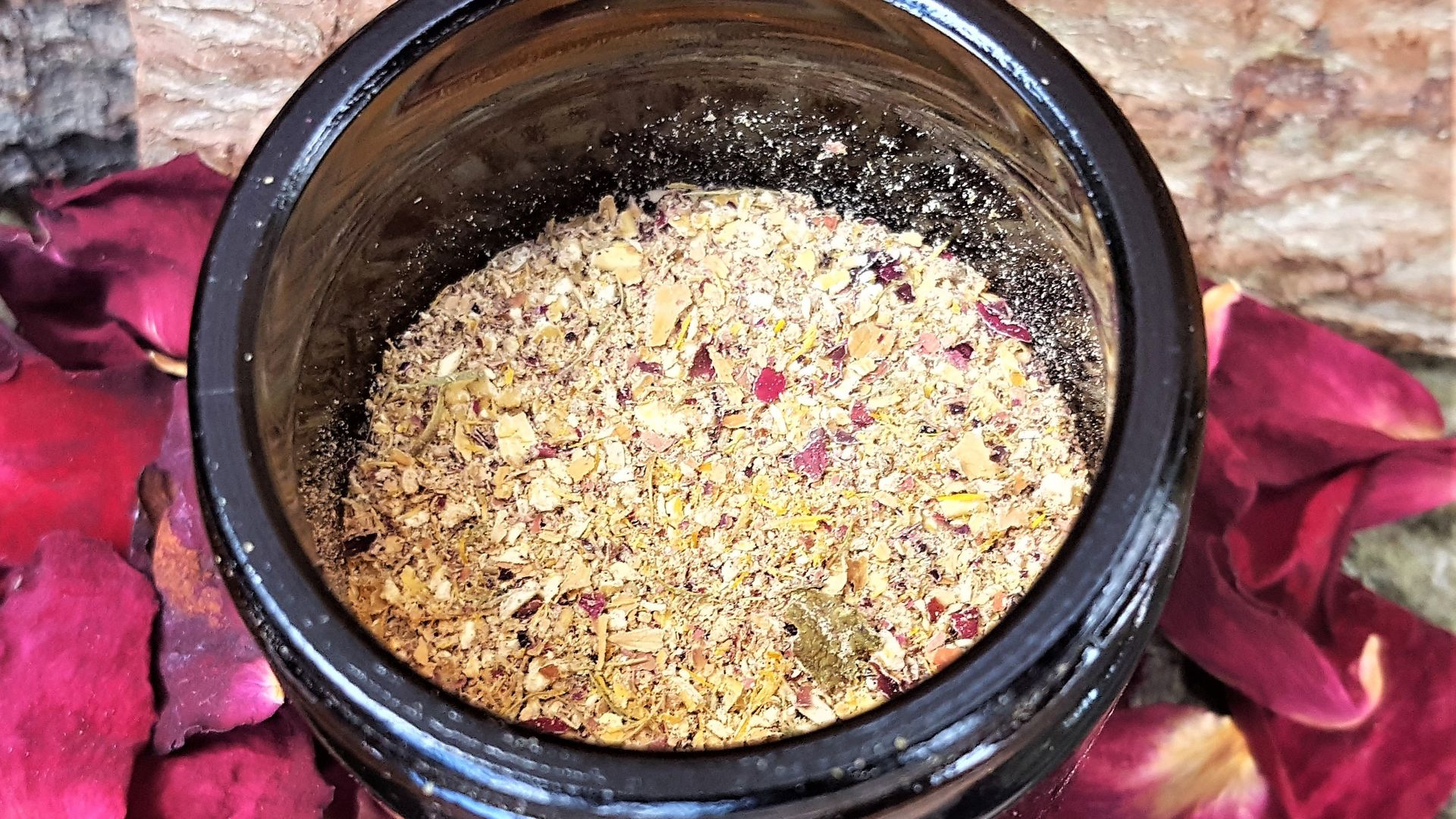
Rose Cleansing Grains
Rose Cleansing Grains
2 tbsp ground oats
2 tsp kaolin clay
2 tsp rose powder
16 drops rose essential oil (optional)
How to use the Cleansing Grains
Dampen your face with warm water. Pour about 2 tsp of the scrub into the palm of one hand. Add 1 to 1 ½ tsp of warm water and mix well until the scrub forms a loose paste. Apply a fingerful of the wet scrub to your chins, cheeks and forehead. Rub in a gently circular motion for 1 to 2 minutes, making sure to cover your entire face but avoiding your eyes, mouth and nostrils. Rinse your face with warm water and wipe away the remaining residue with a soft wet washcloth until your face is clean